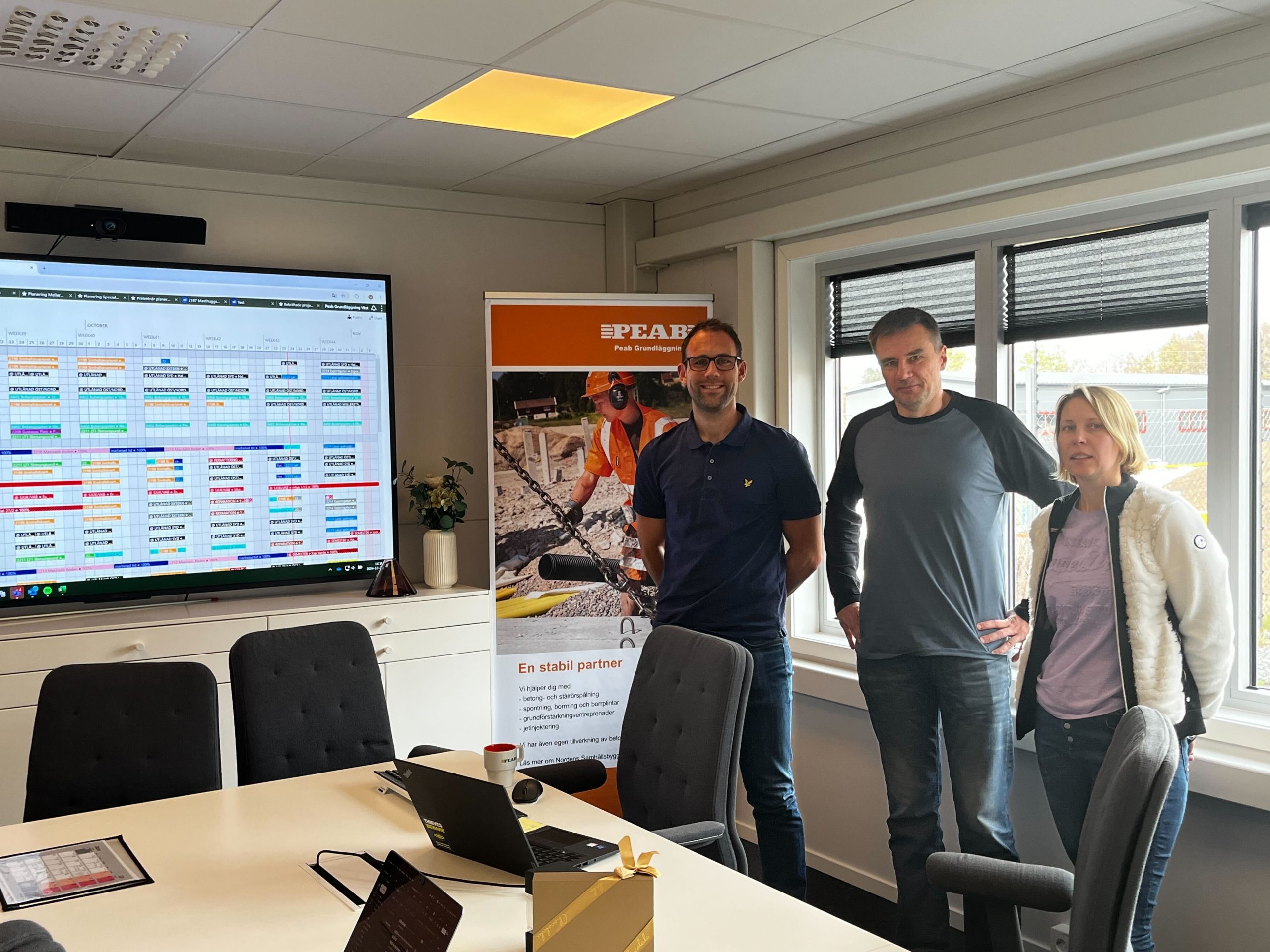You’d be hard pressed to walk past a work site in Gothenburg and not see the name Peab. As a construction leader across Sweden and the Nordics, it’s not surprising that so many new development projects bear the company’s logo.
In fact, when some of the Ganttic team paid the Peab Grundläggning office a visit this past October, we were greeted with their signs as soon as we stepped off the train.
Arriving from our home country of Estonia where the word Peab means “have to” or “must”, to those further to the north, Peab is synonymous with efficient and sustainable construction using local resources. In order for us to learn more about our client, as well as the work they were doing in construction, we knew we just “had to” do it in person.
This is why we headed to Gothenburg to meet up with Chief Project Manager Johan Hjortbrink and his team.
Discover the secret to Peab Grundläggning’s success, as well as some ideas on project and resource planning in construction.
Background
Peab Grundläggning is part of the larger Peab Group specializing in various foundation projects. For over 40 years they’ve been helping customers in the construction and civil engineering sector. Their expertise in concrete piling, sheeting, drilling, steel pipe piling, drill terminals and foundation strengthening contracts has led to the completion of major ports, quays, and bridges across Sweden.
In order to do this work, their teams are split across 4 regions, with a central planning office in each. Here is where the project planning, equipment rental and borrowing, and workforce scheduling takes place.
Moving to Ganttic
Although Ganttic has only been used for less than two years in the Peab Grundläggning office, Johan is anything but a Ganttic newbie. Before starting his position as Chief Project Manager there, he had been using the resource planner in his role at his previous organization.
When he took over at Peab he knew he had to find a better system for managing the people and equipment used at the different regional offices. By the time it was agreed to finally replace their outdated spreadsheet scheduling system, Johan went with the planner he knew well: Ganttic.
Simplifying Scheduling in Construction
For Johan and his team, the secret to Ganttic’s successful implementation came down to its flexibility. Not only did it give them a centralized system for planning people and equipment, but it allowed them to do it their own way.
With a customizable coloring scheme, they could clearly indicate for themselves which people were working with which machines that day. For example if there is a machine and a person with the ability to operate it, then they would both get the same color.
This made it easy to spot at a glance, who and what, were doing the job. Color codes are also a handy way to indicate if a machine is down for maintenance or if a person is out for a holiday.
Another feature that has made their lives easier are resource data fields. With these they could indicate whether a person had a special skill, or which department they were in. And with equipment they could select the energy class or type, simplifying the process of finding the right resource for the job.
But Ganttic has not only been helpful for the white-collar management side of Peab’s operations.
In construction, plans change. A lot. It’s important for those on the planning side to be able to contact those out in the field. In their case, notifications are used for task changes, alerting workers instantly. Likewise the mobile app has been a way for the crews to get their daily agendas and know exactly where they need to be.
Benefits for Peab
For Johan and his team, Ganttic was a simple scheduling solution to their high level planning needs. The process of scheduling new jobs and making last minute changes has been sped up. Plus, they get a customized overview of the day’s plans or the jobs ahead.
This has helped them make more precise decisions about their machine operations. With the help of Ganttic’s utilization tracking, they’ve come up with a more efficient system for equipment management.
For example, if they see that a piece of equipment is used more than others, then they can decide whether it’s in their best interest to buy, rather than rent. On the flip side of this, if a machine is sitting there unused, they can decide if it’s worth its cost.
Moreover, they now have a better way to plan incoming and unconfirmed work. By creating their own system for preliminary tasks, they can accurately predict whether they have the machine or manpower to take on the job.
 The Ganttic team with Johan – showing off their resource scheduler
The Ganttic team with Johan – showing off their resource scheduler
What’s Next
The future seems bright for Peab Grundläggning. With an increase in projects popping up for the rest of the year, they have a lot of work ahead of them. Which in the construction industry, is always a positive thing. Plus, with the help and support of Ganttic and its customer experience team, these challenges can be met head on.
Learn more about Peab Grundläggning here. And if you’re looking for your own platform for construction resource management, book a demo with Ganttic to learn more.